Smart Docs
With the Smart Docs feature, you can save time in the negotiation process by creating a proposal or quote directly from the deal or contact detail view. The document will automatically be populated with the relevant deal, contact, project or product details from your Pipedrive account.
You can then share the document using a trackable link and get notifications when prospects engage with your documents.
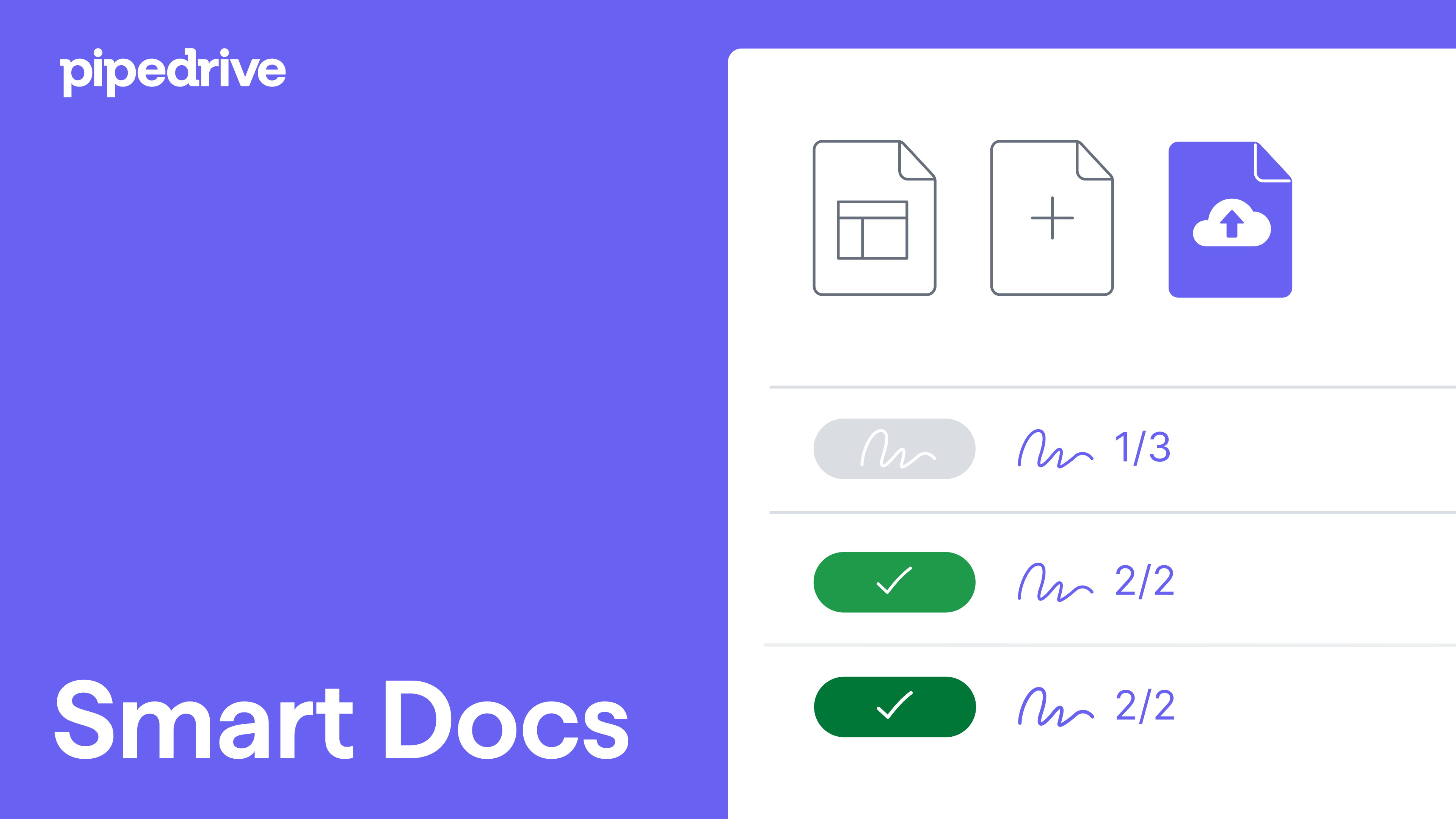
Connecting to your storage provider
To connect Smart Docs, go to a deal or contact’s detail page, click the “Documents” tab and select “Connect cloud storage”. You can connect using three providers – Google Drive, Microsoft OneDrive or SharePoint.

You’ll be brought through a flow to grant permission for Pipedrive to access your account. Once connected, you can upload existing documents or templates saved to your deals, and they’ll also be saved automatically to your drive.
After you connect your account, you’ll see the option to connect either a personal or shared drive as your storage location.
You can also add and disconnect your account by going to Tools and apps > Documents and clicking “+ Add a new account” or “Disconnect.” You can learn more about how files are stored in this article.
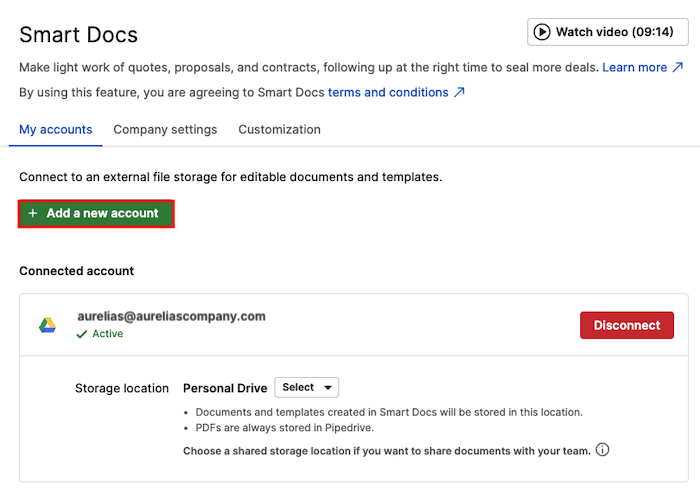
You can also set up a default shared drive for your account.
Creating a shared drive folder
When you connect your storage provider to the Smart Docs feature, you’ll notice a drop-down menu where a person’s drive can be selected. When you connect the Smart Docs feature, you’re automatically assigned a custom shared drive folder. However, you can also create your own.
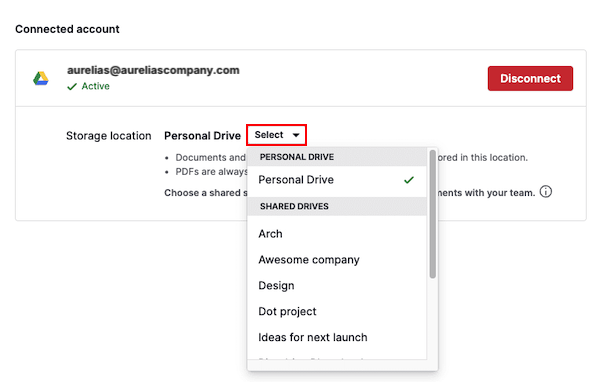
Just navigate to the Shared drives tab in your Google Drive account and create a new folder:
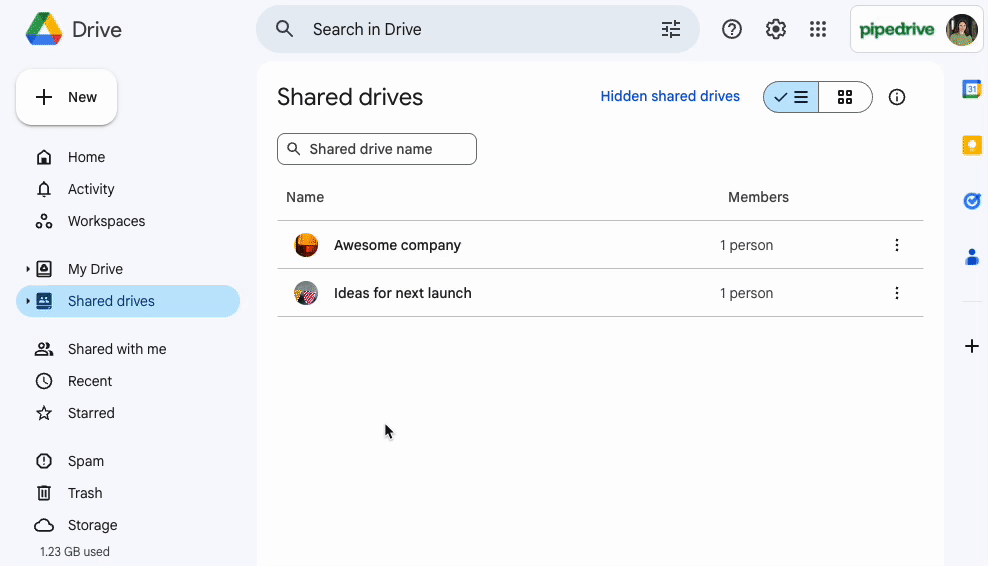
Once you’ve created your new shared folder in Google Drive, navigate to Tools and Apps > Documents and select the new shared folder for use with your Smart Docs:
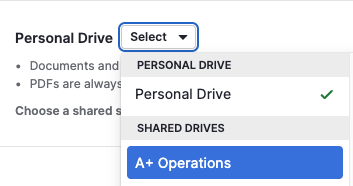
If the option to view or create a new shared folder doesn’t appear in your Google Workspace account, it may be due to the edition being used. To use shared folders, you should have a plan above Business Starter.
If the synced Google Workspace account doesn’t support shared folders, the option in Pipedrive will appear greyed out.
Creating and sharing templates
Once you’ve connected your account, you can start creating documents and proposals. While you can create a document directly, we recommend creating a template first to save time on future documents.
To create a template from scratch, go to the Documents > Templates tab in a deal or contact’s detail view and click on ”Document”, ”Spreadsheet” or “Presentation.” You can also import a template from your provider if you already have one saved.
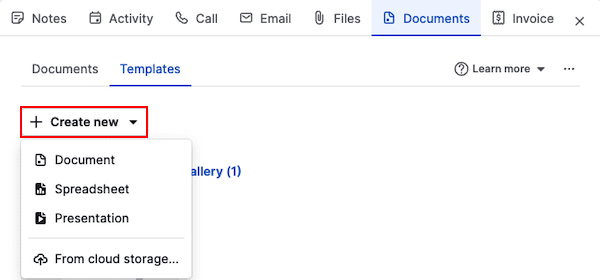
Editing your template
When in the template editor, you can update the template’s name and category and add any Pipedrive deal, contact, product, project, or time-based fields to fill in the content of your template.
To add Pipedrive fields to your template, copy and paste the field from the right-hand side of your template editor into the template body. The field will show in brackets “[ ]” and be automatically replaced with the field data when the template is used for a document.
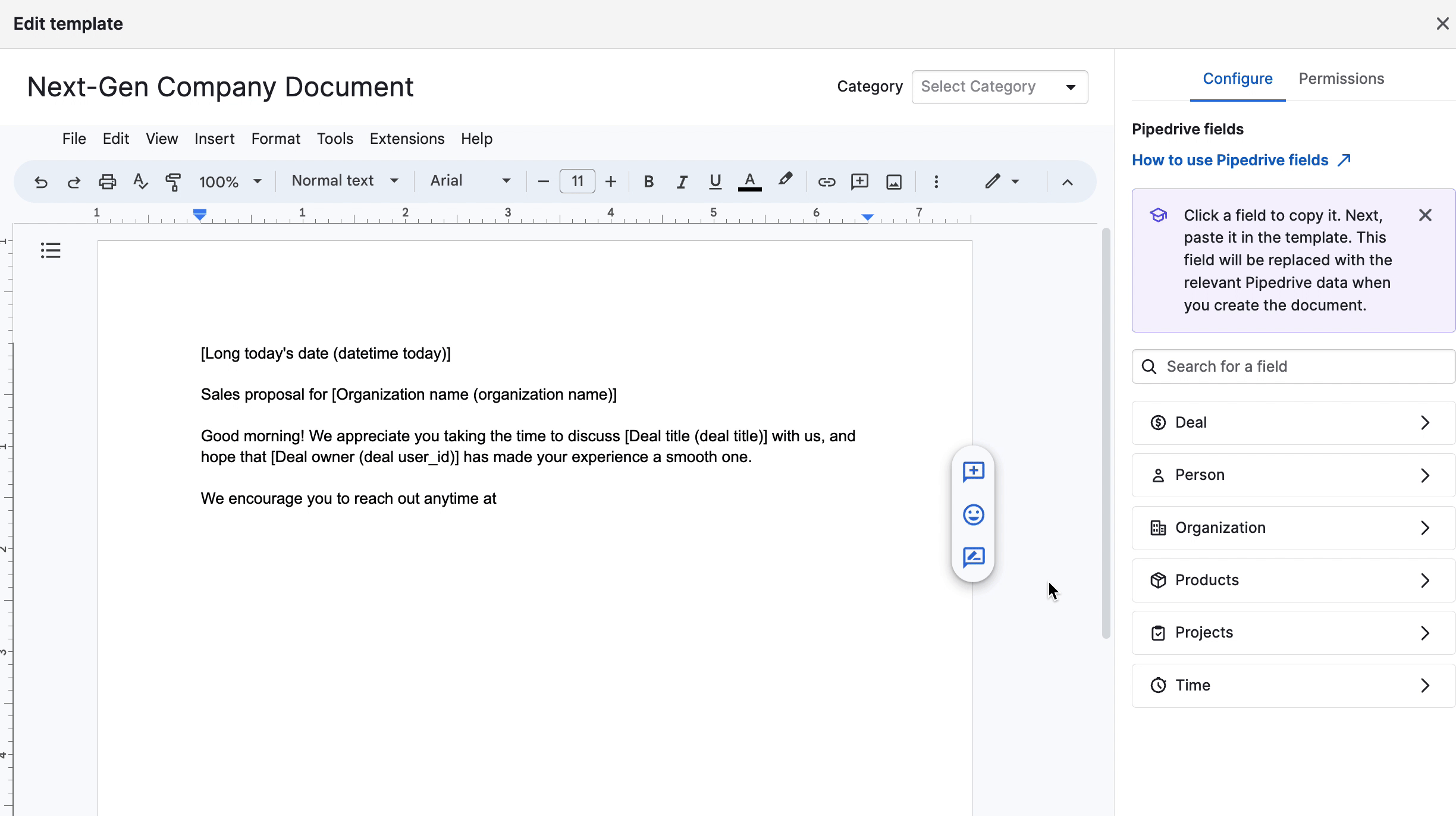
Once you have finished editing your template, click “Close“ to save your template or “Use to create document” to immediately use the template to create a document.
Learn more about fields and templates in Smart Docs from this article.
How can I share templates with my team?
You can use advanced template sharing to automatically share the template with other users in Pipedrive. To share a template, open up to edit your template and click on the “Permissions” tab. There are two different levels of permissions you can give users:
- Can use this template – View the template and use it to create new documents, can’t edit or delete the original template.
-
Can edit this template – View, use, edit and delete the original template.

Once a template has been shared with another user, it will show up in the Shared with me section of the template gallery.
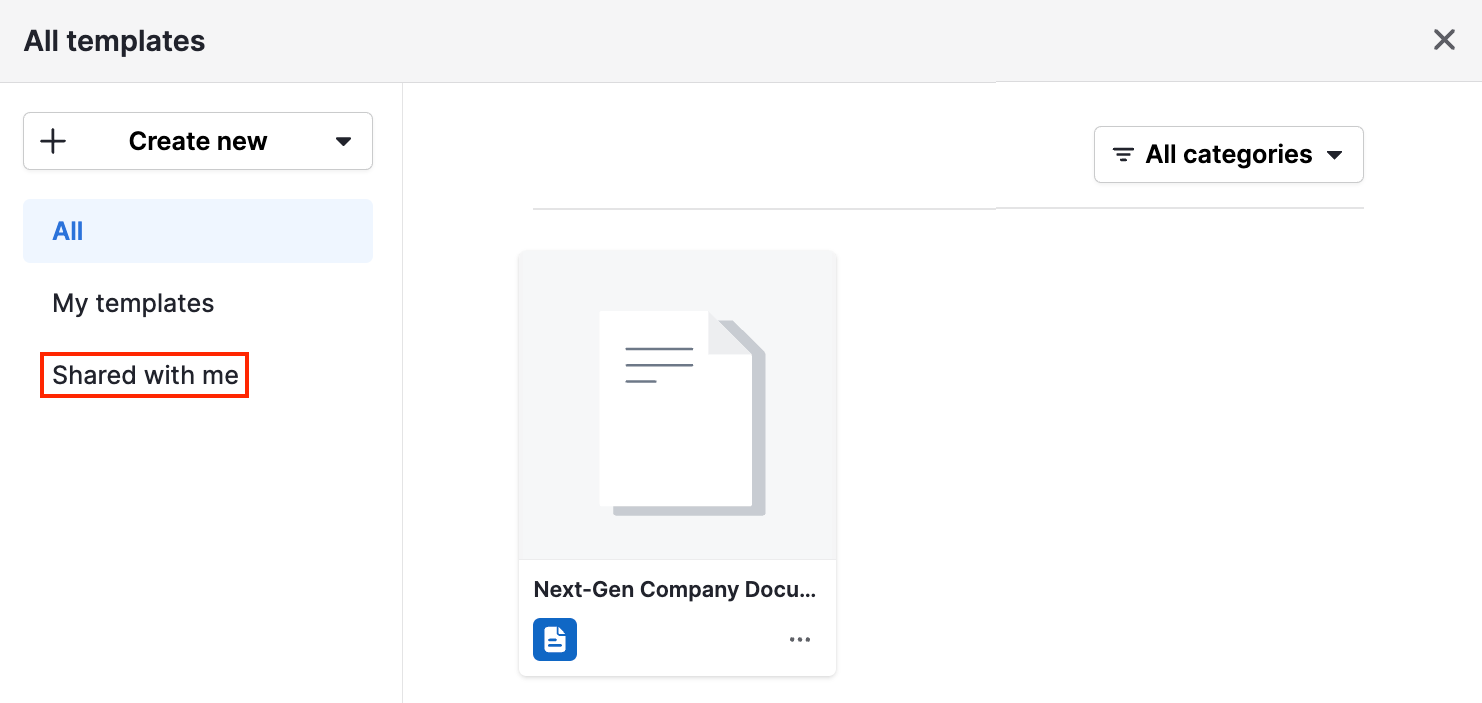
Creating a document
To create a document, click the Documents tab in a deal or contact’s detail view. You’ll see the option to create a document from a previously created template or create one from scratch with a blank document, spreadsheet, or presentation.
You can also import pre-created documents from your device or a connected Google Drive, Microsoft OneDrive or SharePoint account. Documents saved locally can also be uploaded as a PDF from your device.
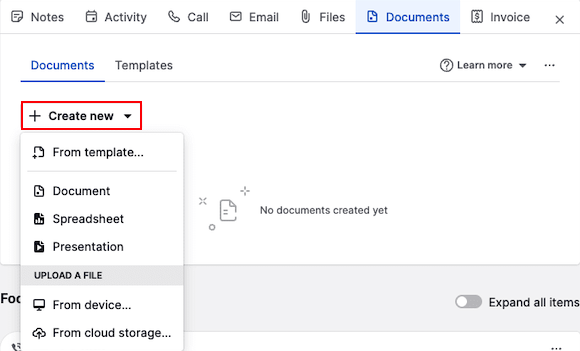
To create a document from an existing template, click “From template” and select the template you wish to use. The document editor will appear with all the template fields filled in with the corresponding data.
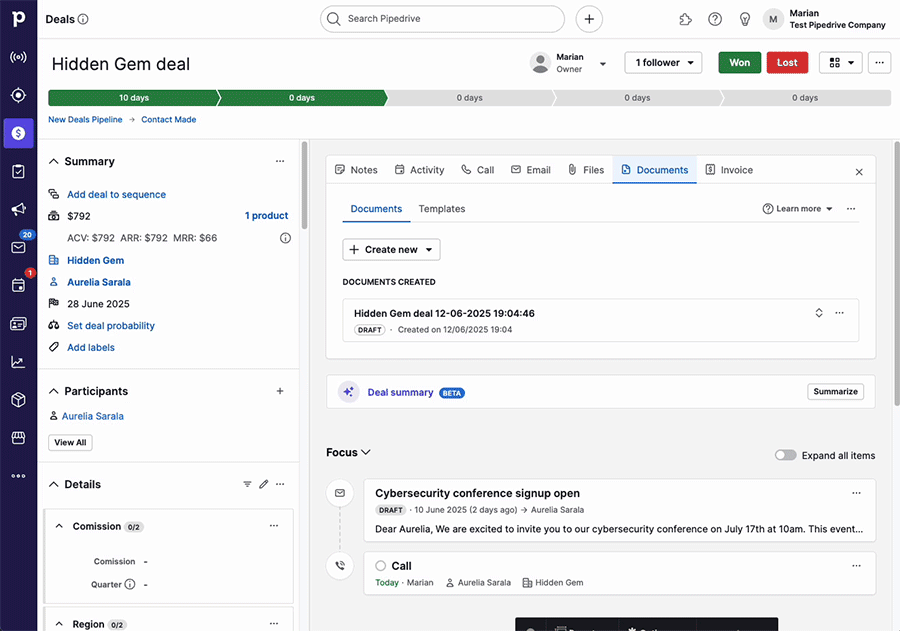
You can customize the name and category and adjust the content according to your preferences. The document will automatically save as you work.
In order to create a document with deal-specific placeholders, you must create it from within the deal details view. To create a document with person-specific placeholders, you must create it from the deal or person’s detail view.
Viewing and sharing your document
Google Drive – If you click on the “Share” button in the bottom right corner of the document editor, you can share the document, download the document as a PDF or delete the document.
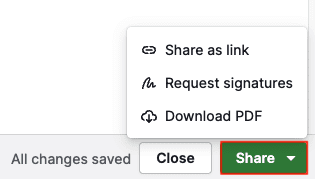
- Share as link – Generate a link to a read-only PDF version of this document, which will be displayed in a browser window once the recipient opens it.
- Request signatures – Request signatures from the recipients of the documents.
- Download PDF – Save your document locally so you can attach it to an email or send it directly to your customers.
OneDrive and SharePoint – To share your document, you’ll first have to close your document editor and click on the “...” button on the document created on the detail page.
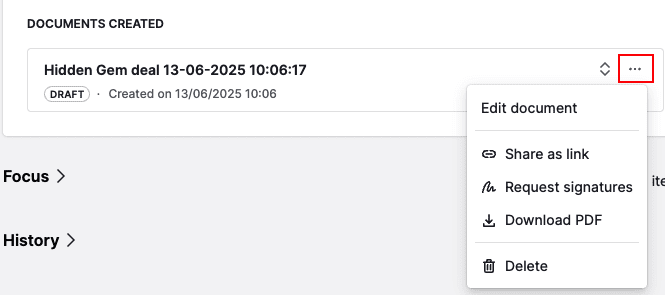
When you share your document with a link, you’ll have the option to track views and set up email notifications for when someone opens the document.
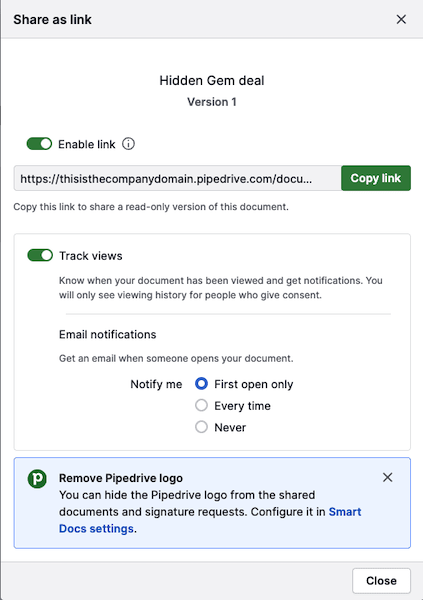
If you enable the track views option, you can be notified by email when your document is opened for the first time, every time, or never.
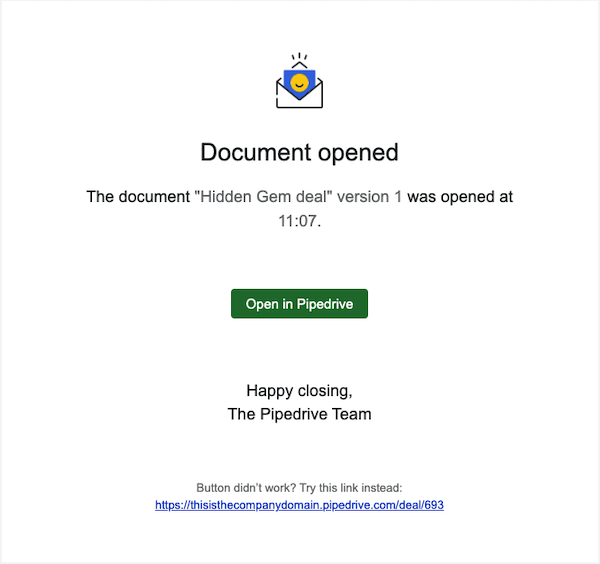
Once a link has been generated, you’ll see it saved as a version under the original document with the number of views and the creation time, and you’ll no longer be able to update that version.
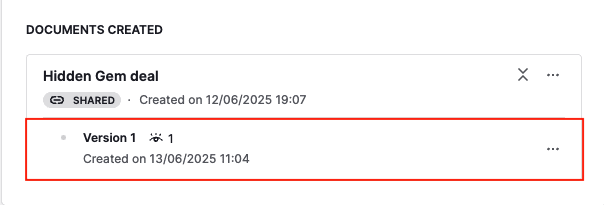
To create another version of a document, click on the original document, make the necessary updates and generate a new link. Once the link is generated, you’ll see it as Version 2 under your document:
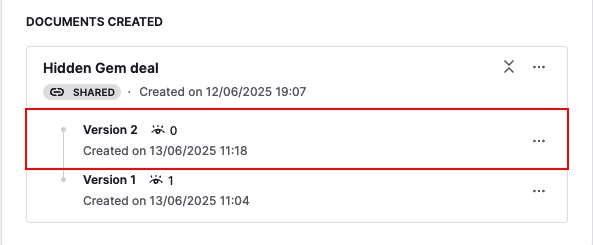
If you create another version of a document, we recommend disabling the link for the first version so there aren’t two live versions. To do so, click on the “...“ of the first version and click on Share as link > Enable link to disable the link.
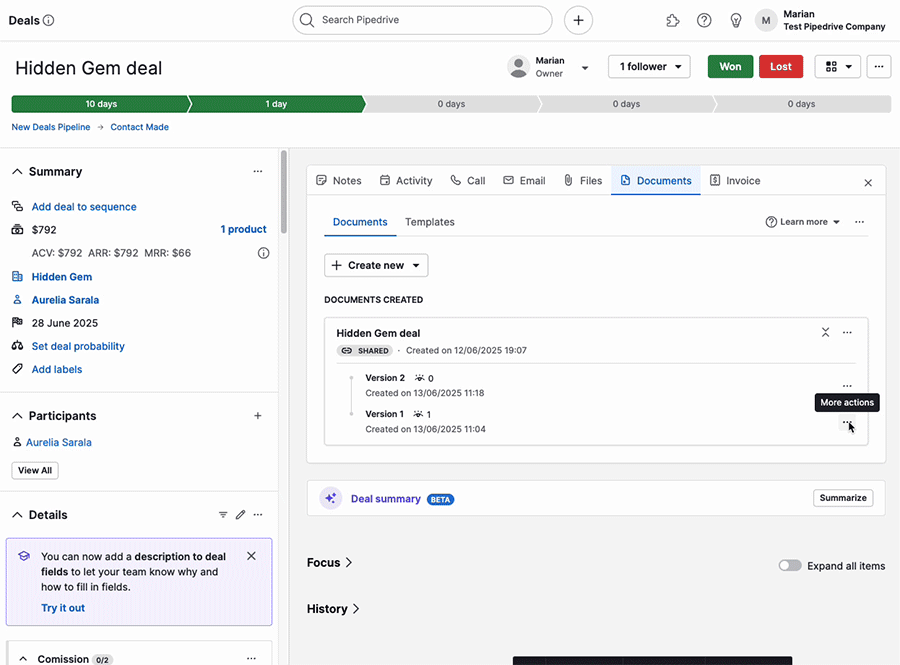
Adding a signature to your document
Smart Docs also comes with an eSignatures functionality, so you can request document signatures from your customers without needing any extra tools.
Create or upload a document with the Smart Docs feature from the deal or contact page and find the option to request signatures. Learn how to request signatures for your documents in this article.
Was this article helpful?
Yes
No